Research Article
Volume 3 Issue 2 - 2018
Assessment of Nitrogen Leaching in Potato (Solonum Tuberosum l.) Cultivated Humid Alfisols and its Impact on Crop Productivity
Centre for Natural Resources Management, Jammu, India
*Corresponding Author: UC Sharma, Centre for Natural Resources Management, Jammu, India.
Received: May 25, 2018; Published: October 17, 2018
Summary
Lysimeter and field studies were conducted on three soils of varying texture to quantify the leaching loss of N due to precipitation in humid environment and its effect on the productivity of potato (Solanum tuberosum L.). The treatments were; three soils having different texture with four N rates, replicated three times in both, lysimeter and field studies. In lysimeter with 60 cm soil depth, maximum leaching of 53.9 kg N/ha was found during first year and 38.7 kg N/ha during second year of experimentation in light textured soil (Soil 3 or S3, clay content 9.2%), when the rainfall was 113.4 cm and 87.9 cm, respectively, during the cropping period. The corresponding values of N loss through leaching were; 28.1 and 24.2 N kg/ha in S2 (clay, 17.3%) and 25.3 and 22.8 N kg/ha in S1 (clay, 22.0%), when N through urea was applied at the rate of 200 kg along with 10 t/ha of farmyard manure. Application of farmyard manure slightly increased leaching of gross N in heavier soil, while no significant effect was observed in light soil. Dry matter yield and N uptake of potato increased significantly with applied N. Application of farmyard manure along with N increased the dry matter yield of potato by 10.8% and N uptake by 11.4% over N applied alone. Recovery of applied N varied from 24.3 and 58.8%, being higher in in light soils. More than 84% (R2 = 0.847) of the variability in N leaching was attributed to the amount of rainfall, sand content and N content (available + applied) of the soil. Concentration of N in leachate decreased with time. The field study showed that N leaching was significantly influenced by the rate of applied N, soil texture and amount of rainfall during the cropping period. The mean N loss was 14.2, 16.5 and 30.3 kg/ha through leaching in soils S1, S2 and S3, respectively. The NO3-N content of the soil was found to be higher in the surface layer (up to 20 cm) compared to lower depths (20-40 and 40-60 cm) and it increased with increase in applied N. Application of N increased the tuber yield of potato and productivity was significantly higher in light textured soil, though N loss through leaching was greater in this soil.
Keywords: Alfisols; Humid environment; Nitrogen leaching; Soil texture; Potato; Rainfall
Introduction
Nitrogen is an important crop nutrient supporting plant growth, but it is vulnerable to leaching in soils with rainwater and/or irrigation water. Understanding of N leaching from fertilized soils is important to fertiliser use economy to optimise crop productivity. Several factors; including rainfall, irrigation, soil texture, structure, permeability, and porosity impact nitrate movement in the soil. In general, more water infiltration results in nitrate moving deeper in the soil profile. For productive agriculture, it is pertinent to evaluate the leaching losses of N, either to compensate the loss through external application and/or enhance N use efficiency for achieving desired crop productivity (Trewavas 2001; Dudley., et al. 2008; Seufert et al. 2012; Becel., et al. 2015). Nitrate leaching from agricultural soils amount to substantial loss of fertilizer nitrogen, but, Riley., et al. (2001) and Rastgar., et al. (2015), reported a large variation in losses depending on soil characteristics and amount of water received through rainfall or irrigation or both. First rainfall event after application may be critical for urea-N losses from both urea and urea-based slow release fertilizers (Wang & Alva 1996). Feaga., et al. (2010), reported that approach used for determining nitrate leaching from agricultural fields is to characterize the chemical composition of the soil pore water in shallow depths under the root zone. It has been reported that overuse of fertilizers polluted the ground water due to leaching (Morari & Guipponi 1997; Liu., et al. 2006). The mechanism of nitrate movement in soil is complex and to quantify the amount of nitrate leached is difficult. The increase in leaching of nitrate under intensive farming relying on fertilizers may be attributed to unsynchronized nutrient release in the soil with respect to the nutrient uptake capacity of the plants. Nitrogen that is not taken up during the growing season is likely to be lost from the soil by leaching, especially on sandy or shallow soils (Sharma 1999; William., et al. 2005).
It is an established fact that application of N fertilizer can ensure crop yield in an agricultural ecosystem. However, if the input of N applied exceeds the amount a crop requirement, the excess N may be converted into nitrate, accumulate in the root zone with the irrigation and rainfall, ultimately reaching the groundwater and polluting it. Potato (Solanum tuberosum L.) requires steady, but not excessive N supply for maximum tuber yield and size. Proper N management methodologies can reduce both N loss and negative impacts to the environment (Milburn., et al. 1990; Zvomuya., et al. 2003; Munoz., et al. 2005). It has been noticed that excessive nitrogen supply can cause delayed tuber formation and bulking rates in potatoes (Kieinkopf., et al. 1981). Nitrogen that is not taken up during the growing season is vulnerable to loss from the soil by leaching, especially on light textured and shallow soils (Lord., et al. 1999). Sharma & Singh (1989) and Sharma & Patel (1991), found that half of recommended dose of N needs to be applied at planting and remainder at the start of tuber formation to get optimum yield and reduce N losses in potato. Reduced amounts of N applied at planting were also recommended by Errebhi., et al. (1998) and Grignani & Zavattaro (2000), to limit NO3-N leaching and improve N recovery and tuber yield. Application of N increased the yield of tubers (> 25g) but decreased in small grade (Hanley., et al. 1965; Firman & Ellen 1988; Sharma & Arora 1989). Wurr., et al. (2002) reported that cooler, wetter conditions after tuber initiation were associated with tubers which were longer, heavier and had more eyes, sprouts and above ground stems. Munoz., et al. (2005) suggested that use of sorghum as a summer cover crop could reduce the risk of nitrate leaching after potato harvesting by recovering residual N from the potato season. With increases in demographic pressure, the demand for increased crop production and improved environmental status requires refinement of management systems (Hatfield &Venereal 2014). However, environmental losses of N can occur as NO3 leaching (Munoz., et al. 2005; Davenport., et al. 2005). The efficiency of fertilizer N use is influenced by many factors including source, form, placement, application rate and timing of the N fertilizer in addition to soil and environmental conditions (Alva 2004; Zebarth & Rosen 2007). Potato recovery of the applied N is low, mainly due to leaching (Errebhi., et al. 1998; Tran & Giroux 1991). Nitrogen fertilizer application should be based on the N required by the crop during its various growth stages (Dell., et al. 2014; Halvorson & Barolo 2014). Nutrient concentration and uptake by plants are the results of total plant growth rates and nutrient availabilities (Augustin., et al. 1977). Tuber dry matter production rates also vary with variety and season (Kunkel., et al. 1973).
In the north-eastern region of India, average 1752 mm rainfall is received from April to October, causing huge leaching loss of N in the soil (Sharma 1989, Sharma., et al. 2014). In this paper, we report data obtained through lysimeter and field studies, to quantify N leaching losses and potato productivity as a result of applied N, amount of rainfall and nature of soil.
Materials and Methods
Two approaches, lysimeter and field, were followed to study N leaching loss from three different textured soils at different applied N rates to corroborate the findings of one approach with another. The lysimeters were filled with the extracted intact from the three soils taken up to 60 cm depth from the field.
Lysimeter study
Lysimeter and field studies were conducted for two years on three soils (Alfisols) to quantify the leaching losses of nitrogen due to rainfall. Lysimeters of 20 cm diameter and 60 cm depth were filled with three soils (S1, S2 and S3), varying in texture and installed in the compound outside of the laboratory building. Each lysimeter was provided with an outlet at the bottom which was connected to the plastic containers (6L capacity) via rubber tubing. Soils were filled in the lysimeters and compacted to match the weight of soil contained in similar volume under field condition (Figure 1). Leachate due to rainfall was collected in plastic containers, measured at measured at weekly intervals and analyzed for N concentration. Total N leached from lysimeters was determined on the basis of N concentration and total amount of leachate collected from a particular container. The physico-chemical characteristics of the soils are given in Table 1. The nitrogen treatment were; T1, no nitrogen; T2, 100 kg N/ha; T3, 200 kg N/ha and; T4, 200 kg N/ha +
Lysimeter and field studies were conducted for two years on three soils (Alfisols) to quantify the leaching losses of nitrogen due to rainfall. Lysimeters of 20 cm diameter and 60 cm depth were filled with three soils (S1, S2 and S3), varying in texture and installed in the compound outside of the laboratory building. Each lysimeter was provided with an outlet at the bottom which was connected to the plastic containers (6L capacity) via rubber tubing. Soils were filled in the lysimeters and compacted to match the weight of soil contained in similar volume under field condition (Figure 1). Leachate due to rainfall was collected in plastic containers, measured at measured at weekly intervals and analyzed for N concentration. Total N leached from lysimeters was determined on the basis of N concentration and total amount of leachate collected from a particular container. The physico-chemical characteristics of the soils are given in Table 1. The nitrogen treatment were; T1, no nitrogen; T2, 100 kg N/ha; T3, 200 kg N/ha and; T4, 200 kg N/ha +
| Characteristics | Soil | ||
| S1 | S2 | S3 | |
| Sand (%) | 56.5 | 51.1 | 70.6 |
| Silt (%) | 21.5 | 31.6 | 20.2 |
| Clay (%) | 22.0 | 17.3 | 9.2 |
| Texture | scl | l | sl |
| Available N (kg ha-1) | 182 | 202 | 232 |
| pH | 5.0 | 5.1 | 5.2 |
| EC (dS m-1) | 0.32 | 0.25 | 0.18 |
Table 1: The physic-chemical characteristics of the soil.
10 t/ha of farmyard manure (FYM). Nitrogen was applied as ammonium sulphate. So, there were 12 treatment (3 soils x 4 N treatments). A basal dose of 63 kg P/ha as single superphosphate and 60 kg K/ha as potassium chloride was applied uniformly in all the lysimeters. The experiment was conducted in complete randomized block design with three replications. The fertilizers were incorporated in the upper 20 cm layer of soil in the lysimeter. One potato tuber of var. Kufri Jyoti, weighing about 60 gm, was planted in each lysimeter at a depth of 5 cm. The leached collected was measured weekly and analyzed for N concentration and, total N leached was determined as per amount of the leachate collected. The N was analyzed as per Nessler’s method (Jackson 1973).
Field study
The field study was conducted at sites from where the soils were taken for lysimeter investigation. The soil characteristics and N treatments were the same as in lysimeter investigation. The potato tubers of var. Kufri Jyoti, were planted at inter and intra spacing of 60 cm and 20 cm, respectively, in plots measuring 3m x 4m. The soil NO3-N was also determined for the soil samples collected after potato harvest from three depths such as; 0-20 cm, 21-40 cm and 41-60 cm. The applied FYM contained 0.379% N, 0.151% P2O5 and 0.372% K2O.
The field study was conducted at sites from where the soils were taken for lysimeter investigation. The soil characteristics and N treatments were the same as in lysimeter investigation. The potato tubers of var. Kufri Jyoti, were planted at inter and intra spacing of 60 cm and 20 cm, respectively, in plots measuring 3m x 4m. The soil NO3-N was also determined for the soil samples collected after potato harvest from three depths such as; 0-20 cm, 21-40 cm and 41-60 cm. The applied FYM contained 0.379% N, 0.151% P2O5 and 0.372% K2O.
Sampling
Samples of tubers, haulms and roots of potato plant were collected from lysimeter and field to analyze for N content. These samples were washed in 0.1 HCl, followed by distilled water and then dried in oven at 65°C. Analysis of soil, plant and water samples was done as per Jackson (1973).
Samples of tubers, haulms and roots of potato plant were collected from lysimeter and field to analyze for N content. These samples were washed in 0.1 HCl, followed by distilled water and then dried in oven at 65°C. Analysis of soil, plant and water samples was done as per Jackson (1973).
For calculating the N balance in soils after harvesting the potato crop, the parameters considered were; N applied, N lost in leaching, N lost through runoff and N uptake by the crop. The soil balance of N (kg/ha) was calculated as: N applied (kg/ha) – N lost through leaching (kg/ha) – N lost through runoff (kg/ha) – Crop N uptake (kg/ha).
Modeling leached N
To quantify leached N (kg/ha), a simple model was developed with three independent variables based on a partial regression equation of the form:
N leached (kg/ha) = a + b1x1 + b2x2 + b3x3
where b1, b2, b3, are the partial regression coefficients for the rainfallin cm (x1) soil clay % (x2) and, N (both applied and native) in kg/ha (x3). The equation was developed using the Doolittle method as described by Goulden (1960), and it gave a R2 value of 0.7056.
To quantify leached N (kg/ha), a simple model was developed with three independent variables based on a partial regression equation of the form:
N leached (kg/ha) = a + b1x1 + b2x2 + b3x3
where b1, b2, b3, are the partial regression coefficients for the rainfallin cm (x1) soil clay % (x2) and, N (both applied and native) in kg/ha (x3). The equation was developed using the Doolittle method as described by Goulden (1960), and it gave a R2 value of 0.7056.
Rainfall during potato growing season
The rainfall during the potato growing period was 1134 mm during the first year and 879 mm during the second year of study (Figure 2). There was a great variation in intensity and amount of rainfall during two years as well as within the year of study.
The rainfall during the potato growing period was 1134 mm during the first year and 879 mm during the second year of study (Figure 2). There was a great variation in intensity and amount of rainfall during two years as well as within the year of study.
Results
N concentration in the leachate
In lysimeter experiment, N concentration in the leachate was influenced by the soil texture, treatments and time of sampling (Figure 3a to 3f) and showed a decreasing trend over time in all the soils. The possible reason was that half of N was applied initially before planting and remainder after 30 days of planting. Application of FYM did not show any significant effect on the N concentration of the leachate. Average N concentrations in the leachate due to N treatments varied from 2.6 to 6.6 mg/lin S1, 3.2 to 7.0 mg/l in S2 and 5.5 to 11.7 mg/lin S3 during the first year and; 4.2 to 9.2 mg/l in S1, 5.2 to 11.5 mg/l in S2 and 8.1 to 14.5 mg/l in S3 during the second year of study (Fig. 3). Average N concentrations due to T1, T2, T3 and T4 during first year were; 3.8, 6.1, 8.0 and 8.5 mg/l of leachate and, during second year of study were; 5.7, 8.8, 11.6 and 11.7 mg/l, respectively. Mean N concentration was 6.6 mg/l during first year and 9.4 mg/l during second year of investigation.
In lysimeter experiment, N concentration in the leachate was influenced by the soil texture, treatments and time of sampling (Figure 3a to 3f) and showed a decreasing trend over time in all the soils. The possible reason was that half of N was applied initially before planting and remainder after 30 days of planting. Application of FYM did not show any significant effect on the N concentration of the leachate. Average N concentrations in the leachate due to N treatments varied from 2.6 to 6.6 mg/lin S1, 3.2 to 7.0 mg/l in S2 and 5.5 to 11.7 mg/lin S3 during the first year and; 4.2 to 9.2 mg/l in S1, 5.2 to 11.5 mg/l in S2 and 8.1 to 14.5 mg/l in S3 during the second year of study (Fig. 3). Average N concentrations due to T1, T2, T3 and T4 during first year were; 3.8, 6.1, 8.0 and 8.5 mg/l of leachate and, during second year of study were; 5.7, 8.8, 11.6 and 11.7 mg/l, respectively. Mean N concentration was 6.6 mg/l during first year and 9.4 mg/l during second year of investigation.
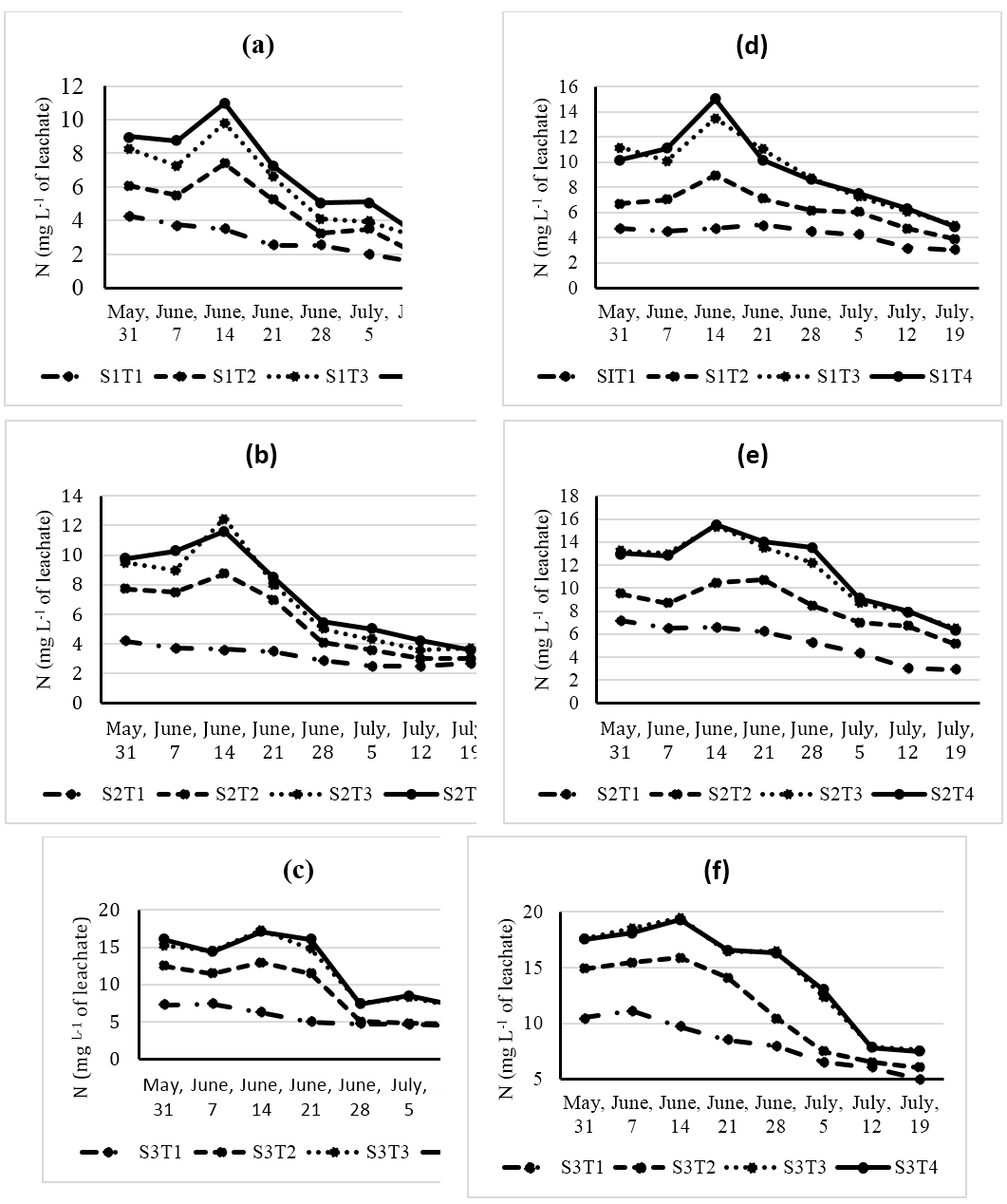
Figure 3: Showing concentration of N in the leachate collected at different periods during firstyear Figs. 3a for S1, 3b for S2 and 3c for S3) and second year (Figs. 3d for S1, 3e for S2 and 3f for S3).
Total N leaching
N leached from soil S1 was 21.0, 56.4, 71.9 and 79.5 mg per lysimeter, 21.9, 63.6, 77.8 and 88.3 mg per lysimeter from S2 and, 44.5, 123.3, 164.4 and 169.5 mg per lysimeter from S3, at N levels of 0, 100 kg, 200 kg and 200 kg + 10 t/ha of FYM, respectively, during first year (Figure 4a). The corresponding values of mg N leached per lysimeter during second year, respectively, were; 17.4, 51.1, 67.1 and 71.7 from S1, 20.2, 48.5, 70.5 and 76.2 from S2 and, 36.3, 84.7, 120.6 and 121.7 from S3 (Fig. 4b). When converted to N leached kg/ha, maximum loss of N through leaching was 53.9 and 38.7 kg/ha during first and second year, respectively, in S3T4. However, mean loss of N from all lysimeters was 26.0 kg/ha during first year when the rainfall was 113.4 cm and 20.8 kg N/ha in second year when rainfall received was 87.9 cm during the potato growing period. Weekly leachate collected (Figure 5) and amount of N leached at various sampling periods increased markedly with increase in the amount of rainfall. Leaching losses of N varied significantly according to N applied, soil characteristics and the period of sampling. Variations in N leaching were found within the soils. Relatively more of N was found in coarse textured soil. The mean loss of N increased by 7.1% with decrease in the clay content of the soil. Leaching loss of N increased by 166.2, 256.8 and 278.4 per cent with T2, T3 and T4 treatments, respectively, over T1 (control).
N leached from soil S1 was 21.0, 56.4, 71.9 and 79.5 mg per lysimeter, 21.9, 63.6, 77.8 and 88.3 mg per lysimeter from S2 and, 44.5, 123.3, 164.4 and 169.5 mg per lysimeter from S3, at N levels of 0, 100 kg, 200 kg and 200 kg + 10 t/ha of FYM, respectively, during first year (Figure 4a). The corresponding values of mg N leached per lysimeter during second year, respectively, were; 17.4, 51.1, 67.1 and 71.7 from S1, 20.2, 48.5, 70.5 and 76.2 from S2 and, 36.3, 84.7, 120.6 and 121.7 from S3 (Fig. 4b). When converted to N leached kg/ha, maximum loss of N through leaching was 53.9 and 38.7 kg/ha during first and second year, respectively, in S3T4. However, mean loss of N from all lysimeters was 26.0 kg/ha during first year when the rainfall was 113.4 cm and 20.8 kg N/ha in second year when rainfall received was 87.9 cm during the potato growing period. Weekly leachate collected (Figure 5) and amount of N leached at various sampling periods increased markedly with increase in the amount of rainfall. Leaching losses of N varied significantly according to N applied, soil characteristics and the period of sampling. Variations in N leaching were found within the soils. Relatively more of N was found in coarse textured soil. The mean loss of N increased by 7.1% with decrease in the clay content of the soil. Leaching loss of N increased by 166.2, 256.8 and 278.4 per cent with T2, T3 and T4 treatments, respectively, over T1 (control).

Figure 4: N leached from lysimeters during first year (4a) and second year (4b).
CD (P=0.05) (a); S x T = 7.8, S = 3.9. T = 4.5; (b); S x T = 6.2, S = 3.1. T = 3.6.
Interactions between Soil and N Content of Leachate
Significant interactions between soil and N treatments were found during both the years of study (Figure 6). A minimum value of 19.2 mg N leached per lysimeter was found under S1T1 treatment and a maximum value of 145.5 mg N in S3T3. Both soil and rate of applied N significantly affected total N leached from the lysimeters during the potato growing season. The application of FYM enhanced the quantity of leached N in S1 and S2, while no significant effect was found in S3.
Significant interactions between soil and N treatments were found during both the years of study (Figure 6). A minimum value of 19.2 mg N leached per lysimeter was found under S1T1 treatment and a maximum value of 145.5 mg N in S3T3. Both soil and rate of applied N significantly affected total N leached from the lysimeters during the potato growing season. The application of FYM enhanced the quantity of leached N in S1 and S2, while no significant effect was found in S3.
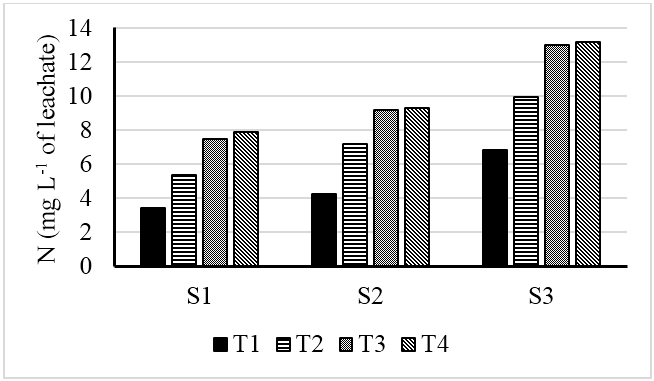
Figure 6: Interactional effects of soils and treatments on N concentration of leachate
CD (P=0.05); S x T = 1.37, S = 0.69. T = 0.80.
N leached in field study
Mean values of N leaching were 16.1, 18.8 and 32.8 kg/ha from S1, S2 and S3 during first year and, 12.2, 14.3 and 27.8 kg/ha during second year of study from S1, S2 and S3, respectively (Figure 7). The applied N had a tremendous impact on N leaching and the mean values of both the years were; 6.5, 19.6, 26.3 and 29.1 kg/ha of N from control, 100 kg N, 200 kg N and 200 kg N + 10 t FYM/ha, of applied nutrients, respectively.
Mean values of N leaching were 16.1, 18.8 and 32.8 kg/ha from S1, S2 and S3 during first year and, 12.2, 14.3 and 27.8 kg/ha during second year of study from S1, S2 and S3, respectively (Figure 7). The applied N had a tremendous impact on N leaching and the mean values of both the years were; 6.5, 19.6, 26.3 and 29.1 kg/ha of N from control, 100 kg N, 200 kg N and 200 kg N + 10 t FYM/ha, of applied nutrients, respectively.
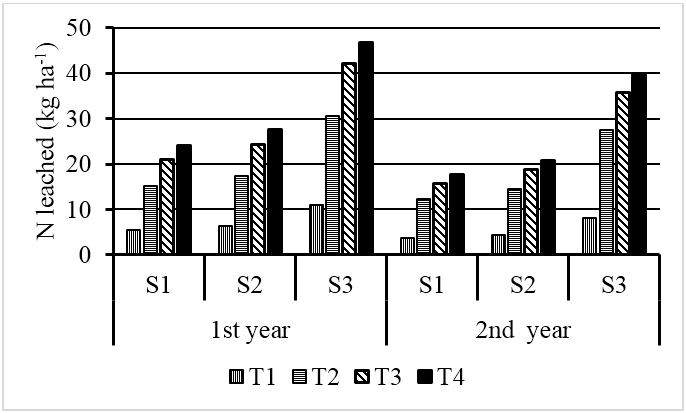
Figure 7: Impact of soil and treatments on N leached during crop growing period in the field study. 1st year; CD (P=0.05); S x T = 2.95, S = 1.47. T = 1.69; 2nd year; CD (P=0.05); S x T = 2.31, S = 1.15, T = 1.33
Total N leaching increased significantly with increase in the rate of applied N and varied between 7.6 and 29.3 kg/ha. Application of FYM along with nitrogen increased leaching of N by 9.9%. The per cent increase in leaching of N over control (no N applied) was 201.5, 304.6 and 376.9% with the application of 100 kg N, 200 kg N and 200 kg N + 10 t/ha of FYM.
Prediction of Leached N
More than 84% (R = 0,847) of the variability in N leaching was attributed to the amount of rainfall, clay content of the soil and N (available native + applied). Doolittle method was used for developing a partial regression equation simple model, based on the rainfall, soil texture and the applied + native N (Goulden 1960). The loss of leached N can be estimate as: N leached (kg/ha) = 2.41 + 0.184 (rainfall in cm) – 0.174 (clay % of soil) + 0.128 (native available N + N applied).
More than 84% (R = 0,847) of the variability in N leaching was attributed to the amount of rainfall, clay content of the soil and N (available native + applied). Doolittle method was used for developing a partial regression equation simple model, based on the rainfall, soil texture and the applied + native N (Goulden 1960). The loss of leached N can be estimate as: N leached (kg/ha) = 2.41 + 0.184 (rainfall in cm) – 0.174 (clay % of soil) + 0.128 (native available N + N applied).
Dry matter yield
Application of N to potato significantly increased the dry matter yield of tuber, haulms and roots during both the years (Figure 8). Application of FYM significantly improved the dry matter yield in all the soils studied. The dry matter yield was significantly higher in S3 than S2 and S1. It was found in the field study that the tuber yield was significantly higher in light textured soil, S3, compared to S1 and S2 while no significant difference was observed in latter two soils (Table 2). Rainfall variation during two years had a significant effect on the tuber yield.
Application of N to potato significantly increased the dry matter yield of tuber, haulms and roots during both the years (Figure 8). Application of FYM significantly improved the dry matter yield in all the soils studied. The dry matter yield was significantly higher in S3 than S2 and S1. It was found in the field study that the tuber yield was significantly higher in light textured soil, S3, compared to S1 and S2 while no significant difference was observed in latter two soils (Table 2). Rainfall variation during two years had a significant effect on the tuber yield.
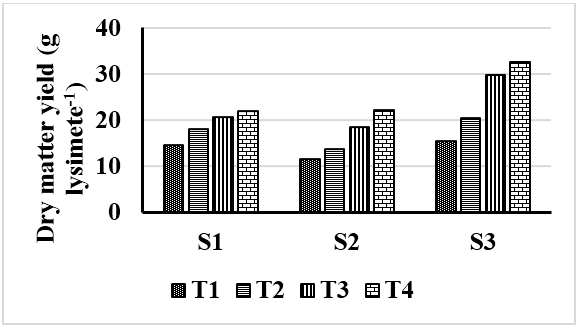
Figure 8: Effect of various soils and treatment on the dry matter yield in lysimeters
CD (P=0.05); S x T = 1.72, S = 0.85. T = 0.99.
A similar trend in N uptake was found in different soils and due to applied N rates. The increase in tuber yield and N uptake may be attributed to the higher NO3-N content of S3 and thus, maintenance of more availability of N to the potato crop in this soil during the potato growth period (Table 2).
| Treatments | NO3-N content (kg ha-1) | Tuber yield (t ha-1) |
N uptake (kg ha-1) |
||
| 0-20 cm | 21-40 cm | 41-60 cm | |||
| Soils | |||||
| S1 | 32.1 | 26.6 | 20.0 | 16.9 | 68.9 |
| S2 | 33.1 | 28.8 | 24.3 | 18.3 | 75.4 |
| S3 | 35.2 | 31.2 | 25.6 | 23.8 | 101.2 |
| C.D. (p = 0.05) | 1.9 | 1.7 | 1.7 | 1.9 | 7.8 |
| N (kg ha-1) | |||||
| 0 | 14.4 | 13.9 | 11.2 | 13.1 | 50.4 |
| 100 | 28.9 | 23.8 | 19.8 | 18.1 | 72.0 |
| 200 | 41.9 | 35.5 | 29.9 | 22.6 | 96.5 |
| 200 + FYM (10 t ha-1) | 48.7 | 42.1 | 32.4 | 24.9 | 108.4 |
| C.D. (p = 0.05) | 2.1 | 1.9 | 1.9 | 2.2 | 9.2 |
| Rainfall (mm) | |||||
| 1134 | 32.1 | 28.5 | 22.7 | 20.5 | 85.1 |
| 879 | 34.7 | 29.1 | 24.3 | 18.9 | 78.6 |
| C.D. (p = 0.05) | 1.7 | NS | NS | 1.5 | 6.4 |
Table 2: Nitrate N, tuber yield and N recovery as affected by soils, applied N and rainfall.
Residual NO3-N content of soil
The nitrate-N content of all the soils, measured prior and subsequent to leaching, varied significantly at different depths, both in field and lysimeter studies. The soil N variation was linked to the nitrogen treatments (Table 2). Increase in N supply significantly enhanced the NO3-N in the soils at different depths and application of FYM further improved it. The results show that application of N and FYM significantly enhanced the supply of N to the crop because of improved soil physical condition. The NO3-N content decreased in all the three soils with depth. The mean NO3-N content was found 33.4, 28.8 and 23.3 kg/ha at 0-20 cm, 21-40 cm and41-60 cm, respectively. A non-significant variation was found in NO3-N content in the top soil (0-20 cm) at 30 and 45 days after planting thereby, indicating that the top soil maintained almost the same level of NO3-N up to about 45 days after planting of potato crop, however, it declined at later dates (Figure 9). The NO3-N content within different soils varied significantly and S3 maintained significantly higher levels than S1 and S2 at 0-20 cm depth. Amount of rainfall significantly affected the nitrate-N content of the top soil (0-20 cm), however, no significant effect was found at lower depths, indicating that a sizeable amount of nitrate might have escaped beyond 60 cm depth with percolating water due to heavy rainfall in the region.
The nitrate-N content of all the soils, measured prior and subsequent to leaching, varied significantly at different depths, both in field and lysimeter studies. The soil N variation was linked to the nitrogen treatments (Table 2). Increase in N supply significantly enhanced the NO3-N in the soils at different depths and application of FYM further improved it. The results show that application of N and FYM significantly enhanced the supply of N to the crop because of improved soil physical condition. The NO3-N content decreased in all the three soils with depth. The mean NO3-N content was found 33.4, 28.8 and 23.3 kg/ha at 0-20 cm, 21-40 cm and41-60 cm, respectively. A non-significant variation was found in NO3-N content in the top soil (0-20 cm) at 30 and 45 days after planting thereby, indicating that the top soil maintained almost the same level of NO3-N up to about 45 days after planting of potato crop, however, it declined at later dates (Figure 9). The NO3-N content within different soils varied significantly and S3 maintained significantly higher levels than S1 and S2 at 0-20 cm depth. Amount of rainfall significantly affected the nitrate-N content of the top soil (0-20 cm), however, no significant effect was found at lower depths, indicating that a sizeable amount of nitrate might have escaped beyond 60 cm depth with percolating water due to heavy rainfall in the region.
Nitrogen uptake
In lysimeter study, maximum N uptake was found in S3, which was, on an average, 29.2 and 36.1% higher than S1 and S2, respectively (Fig. 10). Uptake of N was significantly correlated (r = 0.877**) with the dry matter yield (tubers, haulms and roots). More recovery of N was found in S3 and application of FYM significantly enhanced the amount of recovery per unit of N application. Nitrogen influences vegetative growth and the uptake of other nutrients such as potassium and phosphorus. Even under best management practices, approximately 30-50% of applied nitrogen is lost through different processes and, hence, the farmer is compelled to apply more than what the crop needs to compensate for losses through leaching, volatilization, and denitrification making the nutrient unavailable during the critical stages of crop growth (Maidl., et al. 2002, Hyatt., et al, 2010). Split application of nitrogen is one of the strategies of improving nitrogen use by the crops. In field study, highest mean N uptake in all soils was 108.4 kg/ha when 200 kg N/ha was applied along with 10 t/ha of FYM.
In lysimeter study, maximum N uptake was found in S3, which was, on an average, 29.2 and 36.1% higher than S1 and S2, respectively (Fig. 10). Uptake of N was significantly correlated (r = 0.877**) with the dry matter yield (tubers, haulms and roots). More recovery of N was found in S3 and application of FYM significantly enhanced the amount of recovery per unit of N application. Nitrogen influences vegetative growth and the uptake of other nutrients such as potassium and phosphorus. Even under best management practices, approximately 30-50% of applied nitrogen is lost through different processes and, hence, the farmer is compelled to apply more than what the crop needs to compensate for losses through leaching, volatilization, and denitrification making the nutrient unavailable during the critical stages of crop growth (Maidl., et al. 2002, Hyatt., et al, 2010). Split application of nitrogen is one of the strategies of improving nitrogen use by the crops. In field study, highest mean N uptake in all soils was 108.4 kg/ha when 200 kg N/ha was applied along with 10 t/ha of FYM.
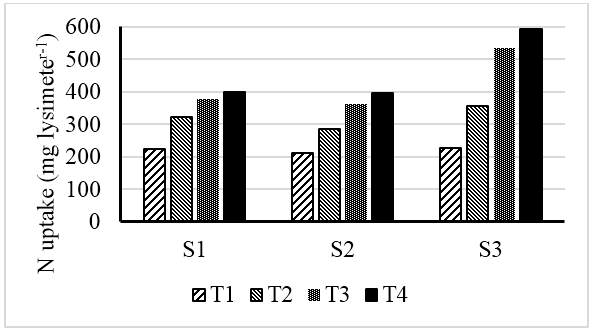
Figure 10: Effect of soils and treatments on N uptake per lysimeter
CD (P=0.05); S x T = 25, S = 12. T = 14
N balance in soils
After harvest of potato crop (field study), it was found that the mean residual N balance in soil was -54.7, 10.3, 83.4 and 68.8 kg/ha in the plots where N was applied @ 0, 100, 200 and 200 kg/ha (including FYM), respectively (Figure 11). There was negative balance of N in control plots which was due to mining of native available N by the potato crop as there was no outside supply. There was build-up of N in the plots where nitrogen was applied through fertilizers alone or with FYM. The mean N balance due to soils was 42.2, 34.7 and 3.8 kg/ha in S1, S2 and S3, respectively. In control (no N) plots, the N balance was -46.7, -51.0 and -66.4 kg/ha in S1, S2 and S3 plots, respectively. In T2S1, T2S2 and T2S3, N balance was 24.5, 17.6 and -11.2 kg N/ha, in T3S1, T3S2 and T3S3, N balance was 101.7, 92.9 and 55.6 kg N/ha and, in T4S1, T4S2 and T4S3, balance was 89.5, 79.5 and 37.4 kg N/ha, respectively.
After harvest of potato crop (field study), it was found that the mean residual N balance in soil was -54.7, 10.3, 83.4 and 68.8 kg/ha in the plots where N was applied @ 0, 100, 200 and 200 kg/ha (including FYM), respectively (Figure 11). There was negative balance of N in control plots which was due to mining of native available N by the potato crop as there was no outside supply. There was build-up of N in the plots where nitrogen was applied through fertilizers alone or with FYM. The mean N balance due to soils was 42.2, 34.7 and 3.8 kg/ha in S1, S2 and S3, respectively. In control (no N) plots, the N balance was -46.7, -51.0 and -66.4 kg/ha in S1, S2 and S3 plots, respectively. In T2S1, T2S2 and T2S3, N balance was 24.5, 17.6 and -11.2 kg N/ha, in T3S1, T3S2 and T3S3, N balance was 101.7, 92.9 and 55.6 kg N/ha and, in T4S1, T4S2 and T4S3, balance was 89.5, 79.5 and 37.4 kg N/ha, respectively.
Discussion
N concentration in the leachate
Highest concentration of N in the leachate was found in S3 because of higher available N in this soil and due to its coarse texture. The concentration of N in the leachate increased with increase in N application during both the years. It corroborates the findings of Singh & Singh (1987) and Sharma (1990). The higher N concentration in the leachate during second year was due to the reason that amount of leachate collected was less compared to first year. Higher leachate during first year diluted the N concentration, though total N leached was more. The soil concentration of N increased initially up to third sampling date but, decreased subsequently in all the soils and at all applied N levels, possibly due to plant uptake and leaching losses.
Highest concentration of N in the leachate was found in S3 because of higher available N in this soil and due to its coarse texture. The concentration of N in the leachate increased with increase in N application during both the years. It corroborates the findings of Singh & Singh (1987) and Sharma (1990). The higher N concentration in the leachate during second year was due to the reason that amount of leachate collected was less compared to first year. Higher leachate during first year diluted the N concentration, though total N leached was more. The soil concentration of N increased initially up to third sampling date but, decreased subsequently in all the soils and at all applied N levels, possibly due to plant uptake and leaching losses.
Soil properties such as, texture, structure, water holding capacity, soil porosity, permeability affect and determine N leaching. Leaching occurs when the air spaces in soil become filled with water and gravity begins to move water downward. Fine-textured soils (high clay) are generally less susceptible to nitrate movement than sandy-textured soils because water permeability is much lower. Appropriate nutrient management can greatly reduce the risk of nitrate leaching loss. Growing crops need a constant supply of N nutrition, but this should ensure to minimize nitrate losses by appropriate methods. The primary cause for drinking-water well closures in many countries is a high nitrate concentration in the aquifer water (Kurtzman., et al. 2013).
N leached
Leaching of N increased significantly with increase in N application in three soils during both the years of study (Figures 3a and 3b). The loss of N was slightly more in FYM applied lysimeters than N applied alone, more so in heavier soils. In lysimeter study, a highly significant relationship was observed between rainfall (Figure 3, r = 0.962**), clay content (r = 0.826**), available and applied N (r = 0.761**) and leaching of N. The leaching of plant nutrients from agricultural fields is affected by the nature of soil, climatic factors and soil-plant system management. Havlin., et al. (1999) reported that under certain conditions, NH4+ is transformed to NO3- through a biological process called nitrification. Whereas NH4+ is readily immobilized by soil microbes and absorbed on negatively charged soil particles, NO3- is a highly mobile anion that may be leached out of the upper soil horizons under conditions of excessive precipitation and high N application rates. Nitrification is also a potential gateway to N losses through denitrification, whereby NO3- can be biologically reduced to NO, N2O or N2 under saturated soil conditions. As a result of suboptimal field management practices, when much of nitrogen has not been utilized by crop and has accumulated in the root zone in the form of nitrate, is subjected to leaching along with precipitation and irrigation water (Michael., et al. 2009). In light textured soils, nutrient retention is generally poor and soluble nutrients like nitrogen (N) are prone to leaching (MacKown & Tucker 1985).
Leaching of N increased significantly with increase in N application in three soils during both the years of study (Figures 3a and 3b). The loss of N was slightly more in FYM applied lysimeters than N applied alone, more so in heavier soils. In lysimeter study, a highly significant relationship was observed between rainfall (Figure 3, r = 0.962**), clay content (r = 0.826**), available and applied N (r = 0.761**) and leaching of N. The leaching of plant nutrients from agricultural fields is affected by the nature of soil, climatic factors and soil-plant system management. Havlin., et al. (1999) reported that under certain conditions, NH4+ is transformed to NO3- through a biological process called nitrification. Whereas NH4+ is readily immobilized by soil microbes and absorbed on negatively charged soil particles, NO3- is a highly mobile anion that may be leached out of the upper soil horizons under conditions of excessive precipitation and high N application rates. Nitrification is also a potential gateway to N losses through denitrification, whereby NO3- can be biologically reduced to NO, N2O or N2 under saturated soil conditions. As a result of suboptimal field management practices, when much of nitrogen has not been utilized by crop and has accumulated in the root zone in the form of nitrate, is subjected to leaching along with precipitation and irrigation water (Michael., et al. 2009). In light textured soils, nutrient retention is generally poor and soluble nutrients like nitrogen (N) are prone to leaching (MacKown & Tucker 1985).
N leached in field study
Nitrogen leaching during the first year was 54.7% higher than second year (Figure 6). This was due to higher rainfall during the potato growing season in the first year (1134 mm) than second year (879 mm). Significantly very high coefficient of correlation between the amount of rainfall and leaching of N was observed (r = 0.912). Loss of N through leaching in S3 was 133.8% and 83.6% higher than S1 and S2. This may be attributed to the reason that light texture of S3 provided more pore space for easy percolation of N during potato growth period. Our results corroborate the finding of Sharma (1990) and Mack and Ruark 2015). Nitrate is present in almost all soils, except flooded soils. Since nitrate is susceptible to many transformations and loss pathways, nitrate concentrations should ideally be no more than is required to meet plant nutritional needs. Soil nitrate should be depleted as much as possible by the time harvest occurs to minimize loss between crops.
Nitrogen leaching during the first year was 54.7% higher than second year (Figure 6). This was due to higher rainfall during the potato growing season in the first year (1134 mm) than second year (879 mm). Significantly very high coefficient of correlation between the amount of rainfall and leaching of N was observed (r = 0.912). Loss of N through leaching in S3 was 133.8% and 83.6% higher than S1 and S2. This may be attributed to the reason that light texture of S3 provided more pore space for easy percolation of N during potato growth period. Our results corroborate the finding of Sharma (1990) and Mack and Ruark 2015). Nitrate is present in almost all soils, except flooded soils. Since nitrate is susceptible to many transformations and loss pathways, nitrate concentrations should ideally be no more than is required to meet plant nutritional needs. Soil nitrate should be depleted as much as possible by the time harvest occurs to minimize loss between crops.
Tuber and dry matter yield
Increase in applied N increased the dry matter yield of potato crop significantly over control plots and application of FYM @ 10 t/ha further improved it by 10.1% over N applied alone (Fig. 7). This may be due to additional N present in the FYM. Similar results were reported by Sharma & Arora (1987). Both dry matter yield and N uptake were significantly influenced by the amount of rainfall received during the crop growing period. The tuber yield (r = 0.882**) and N uptake (r = 0.791**) were significantly correlated with the amount of rainfall water received. The weather conditions during potato growth is generally considered as the decisive factor for plant growth and tuber production (N’Dayegamiye., et al. 2013). It has been reported that split application of nitrogen is one of the strategies of improving nitrogen use by the crops (Kelling., et al. 2015; Tetsuhisa., et al 2015). The decrease in nitrate content at lower depths may be due to denitrification by facultative organisms in the absence of aerobic condition and volatilization of N as nitrous oxide and elemental N (Kamp., et al. 2015, Wrage., et al. 2004). The time of soil sampling after the planting of the potato crop had a significant effect on the NO3-N content in all the soils and at all the depths.
Increase in applied N increased the dry matter yield of potato crop significantly over control plots and application of FYM @ 10 t/ha further improved it by 10.1% over N applied alone (Fig. 7). This may be due to additional N present in the FYM. Similar results were reported by Sharma & Arora (1987). Both dry matter yield and N uptake were significantly influenced by the amount of rainfall received during the crop growing period. The tuber yield (r = 0.882**) and N uptake (r = 0.791**) were significantly correlated with the amount of rainfall water received. The weather conditions during potato growth is generally considered as the decisive factor for plant growth and tuber production (N’Dayegamiye., et al. 2013). It has been reported that split application of nitrogen is one of the strategies of improving nitrogen use by the crops (Kelling., et al. 2015; Tetsuhisa., et al 2015). The decrease in nitrate content at lower depths may be due to denitrification by facultative organisms in the absence of aerobic condition and volatilization of N as nitrous oxide and elemental N (Kamp., et al. 2015, Wrage., et al. 2004). The time of soil sampling after the planting of the potato crop had a significant effect on the NO3-N content in all the soils and at all the depths.
N uptake and balance in soils
Nitrogen uptake was significantly related to potato yield (Fig. 8). N balance in FYM plots (200 kg/ha applied N) was low compared to the plots where 200 kg N/ha was applied through fertilizer only. Besides N uptake, there was more N loss through leaching and runoff resulting in low soil N balance. Our results are in agreement with Munoz., et al. (2003).
Nitrogen uptake was significantly related to potato yield (Fig. 8). N balance in FYM plots (200 kg/ha applied N) was low compared to the plots where 200 kg N/ha was applied through fertilizer only. Besides N uptake, there was more N loss through leaching and runoff resulting in low soil N balance. Our results are in agreement with Munoz., et al. (2003).
Conclusions
Because of heavy loss of N due to leaching, more so under humid conditions, need may arise to compensate the loss for getting optimum crop yields. Nitrogen leaching as nitrate is a naturally occurring process as it is soluble and mobile. Most crops prefer to take up nitrogen as nitrate. Having an available supply of nitrate when the plant needs it, is important to prevent leaching losses. Having too much nitrate in the soil enhance its loss with percolating water. In regions which get heavy rainfall, a slow-release fertilizer may be the most economical solution. The areas with the highest risk for nitrate leaching are associated with high precipitation, irrigated conditions, or coarse textured, shallow soils. Nitrate leaching, like denitrification and volatilization, represents an economic loss, because once the N has left the soil system, it is not available for crop uptake. The crop should be managed in a way so that it can use as much of the nitrogen supply as possible. The land should not be kept without crop at any time. It is necessary to adjust the nitrogen dose to compensate the leaching losses of N by enhancing the application of this nutrient to get optimum crop yields.
The leaching of plant nutrients from agro-ecosystems is influenced by pedo-climatic and soil-plant system and management. The soil texture and the cationic and anionic exchange capacity of the soil, amount and the intensity of rainfall, dose and the kind of the fertilizer and climatic factors affect N leaching in the soil. In areas of high rainfall, it is advised that the dose of N is split so that only that quantity is available to the potato crop, which is actually required at different stages of crop growth. Since potato is a shallow rooted crop, it cannot take N if it leaches away from the root zone. Care has to be taken to apply ‘best management practices’ in nitrogen management so that the N use efficiency can be enhanced on sustainable basis.
References
- Alva A. “Potato nitrogen management”. Journal of Vegetable Crop Production10.1 (2004): 97-130.
- Augustin J., et al. “Influence of fertilizer, irrigation, and storage treatments on nitrate-N content of potato tubers”. American Potato Journal 54.4 (1977): 125-136.
- Becel C., et al. “Assessing nitrate leaching in cropping systems based on integrated weed management using the STICS soil–crop model”. European Journal of Agronomy 62 (2015): 46-54.
- Davenport JR., et al.“Environmental impacts of potatoes nutrient requirements”. American Journal of Potato Research 82 (2005): 321-328.
- Dell CJ., et al. “Nitrous oxide emissions with enhanced efficiency nitrogen fertilizers in a rainfed system”. Agronomy Journal106.2 (2014): 723-731.
- Dudley LM., et al. “Drainage water reuse: biological, physical, and technological considerations for system management”. Journal of Environment Quality37.5 (2008): 25-35.
- Errebhi M., et al.“Potato yield response and nitrate leaching as influenced by nitrogen management”. Agronomy Journal90 (1998): 10-15.
- FEAGA JB., et al. “Long-term nitrate leaching under vegetable production with cover crops in the Pacific Northwest”. Soil Science Society of America Journal74 (2010): 186-195.
- Firman DM and Ellen EJ. “Field measurement of photosynthetic rate of potatoes grown with different rates of nitrogen”. Journal of Agricultural Science111 (1988): 85-90.
- Goulden CH. “Methods of Statistical Analysis”. John Wiley & Sons, London (1960):
- Grignani C and Zavattaro L. “A survey on actual agricultural practices and their effect on the mineral nitrogen concentration in soil solution”. European Journal of Agronomy 12.3 (2000): 251-258.
- Halvorson AD and Bartolo ME. “Nitrogen source and rate effects on irrigated corn yields and nitrogen-use efficiency”. Agronomy Journal 106.2 (2014): 681-693.
- Hanley FG., et al. “The effects of fertilizers on bulking of Majestic potatoes”. Journal of Agricultural Sciences65.2 (1965): 159-169.
- Hatfield JL and Venterea RT. “Enhanced Efficiency Fertilizers: A Multi-Site comparison of the effects on nitrous oxide emissions and agronomic performance”. Agronomy Journal 106.2 (2014): 679-680.
- Havlin JL., et al. “Soil Fertility and Fertilizers: An Introduction to Nutrient Management. 6th edition”. Prentice Hall, Inc. Saddle River, New Jersey (1999):
- Hyatt CR., et al.“Polymer coated Urea maintains potato yields and reduces nitrous oxidesemissions in a Minnesota loamy sand”. Soil Science Society of America Journal 74.2 (2010): 419-428.
- Jackson ML. “Soil Chemical Analysis. Parentice Hall of India, New Delhi, India”. (1973):
- Kamp A., et al. “Nitrate storage and dissimilatory nitrate reduction by eukaryotic microbes”. Frontiers in Microbiology 6 (2015): 1492-1497.
- Kelling K., et al. “Importance of early season nitrogen rates and placement in Russet Burbank potatoes”. American Journal of Potato Research92.4 (2015): 502-510.
- Kieinkopf GE., et al.“Dry matter production and nitrogen utilization by six potato cultivars”. Agronomy Journal 73 (1981): 799-802.
- Kunkel R., et al. “Mineral element content of potato plants and tuber vs. yields”. American Potato Journal 50.8 (1973): 275-282.
- Kurtzman D., et al. “Nitrate fluxes to groundwater under citrus orchards in a Mediterranean climate: observations, calibrated models, simulations and agro-hydrological conclusions”. Journal of Contaminant Hydrology151 (2013): 93-104.
- Liu Hongbin., et al.“Nitrate contamination of groundwater and its affecting factors in rural areas of Beijing Plain”. Acta Pedologica Sinica 43 (2006): 405-413.
- Lord EI., et al."Nitrate sensitive areas: study of large scale control of nitrate loss in England”. Soil Use and Management15.4 (1999): 201-208.
- Mack RN and Ruark MD. “On-farm comparisons of nitrogen fertilizers and water quality implications”. Proceedings of Wisconsin’s Annual Potato Meeting (2015):
- Mackown CT and Tucker TC. “Ammonium nitrogen movement in a coarse-textured soil amended with zeolite”. Soil Science Society of America Journal49.1 (1985): 235-238.
- Maidl FX., et al.“Potato uptake and recovery of nitrogen. 15N-enriched ammonium nitrate”. Geoderma 105.3 (2002): 167-177.
- Michael GJ., et al. “Nutrient losses under simulated rainfall from pasture plots in the Great Lake District, New South Wales”. Australian Journal of Soil Research47.6 (2009): 555-564.
- Milburn P., et al.“Nitrate leaching from systematically tiled potato fields in New Brunswick”. Canadian Journal of Environment Quality19.3 (1990): 448-454.
- Morari F and Guipponi C. “Effect of four cultivation systems for maize on nitrogen leaching 2. Model simulation”. European Journal of Agronomy 6.1 (1997): 113-123.
- Munoz F., et al.“Environmentally responsible potato production systems: A review”. Journal of Plant Nutrition28.8 (2005): 1287-1309.
- Munoz GR., et al. “Nitrogen budget and soil N dynamics after multiple application of unlabeled or 15Nitrogen-enriched dairy manure”. Soil Science Society of America Journal67 (2003): 817-825.
- N’dayegamiye A., et al. “Manure and paper mill sludge application effects on potato yield, nitrogen efficiency and disease incidence”. Agronomy Journal 3.1 (2013): 43-58.
- Rastgar S., et al.“Economic cost of soil nutrients loss from summer rangelands of Nour-rud watershed in North of Iran”. Ecopersia3.2 (2015): 945-958.
- Riley WJ., et al. “Nitrogen leaching and soil nitrate, nitrite, and ammonium levels under irrigated wheat in Northern Mexico”. Nutrient Cycling in Agroecosystems61.3 (2001): 223-236.
- Seufert V., et al.“Comparing the yields of organic and conventional agriculture”. Nature485 (2012): 229-232.
- Sharma UC. “Influence of soil texture and rainfall on leaching of potassium and its recovery by potato (Solanum tuberosum)”. Indian Journal of Agricultural Sciences 59 (1989): 713-717.
- Sharma UC. “Studies on N leaching from Alfisols of Meghalaya”. Journal Indian Society of Soil Science 38 (1990): 218-223.
- Sharma UC. “Loss of N through leaching and runoff from two potato land use systems on different soils”. Impact of land use change on nutrient loads from diffuse sources (1999): 257.
- Sharma UC and Arora BR. “Effect of nitrogen, phosphorus and potassium application on the yield of potato tubers (Solonum tuberosum L.)”. Journal of Agricultural Science 108.2 (1987): 321-328.
- Sharma UC., et al. “Soil fertility, erosion, runoff and crop productivity affected by different farming systems”. Ecopersia 2 (2014): 629-650.
- Sharma UC and Patel CS. “Relative efficiency of N sources and amendments on acidic soils of Meghalaya with potato as test crop”. Journal Indian Society Soil Science 39 (1991): 231-235.
- Sharma UC and SINGH K. “Response of potato to N, P and K on acidic soils of Meghalaya”. Journal Indian Potato Association 15 (1989): 40-44.
- Singh GR and Singh TA. “Effect of urea super granules on leaching loss and recovery of N by wheat”. Journal Indian Society of Soil Science 35 (1987): 739-741.
- Tetsuhisa D., et al. “Effect of varietal differences in root system on hydraulic conductance in potatoes under different soil water conditions and planting dates”. Potato Research58.2 (2015): 103-119.
- Tran TS and Giroux M. “Effects of N rates and harvest dates on the efficiency of 15N-labelled fertilizer on early harvested potato”. Canadian Journal of Soil Science71 (1991): 519-532.
- Trewavas A. “Urban myths of organic farming”. Nature410 (2001): 409-410.
- Wang FL and Alva AK. “Leaching of nitrogen from slow-release urea sources in sandy soils”. Soil Science Society of American Journal60 (1996): 1454-1458.
- Westermann DT. “Nutritional requirements of potatoes”. American Journal of Potato Research 82 (2005): 301-307.
- Williams JR., et al. “Nitrate leaching and residual soil nitrogen supply following outdoor pig farming”. Soil Use and Management21 (2005): 245-252.
- Wrage N., et al.“Nitrous oxide production in grassland soils: assessing the contribution of nitrifier denitrification”. Soil Biology & Biochemistry 36.2 (2004): 229-236.
- Wurr DCE., et al.“The effect of cultural and environmental factors on potato seed tuber morphology and subsequent sprout and stem development”. Journal of Agricultural Science136.1 (2002): 55-63.
- Zebarth BJ and Rosen CJ. “Research perspective on nitrogen BMP development for potato”. American Journal of Potato Research 84.1 (2007): 3-18.
- Zvomuya F., et al.“Nitrate leaching and nitrogen recovery application of polyolefin-coated urea to potato”. Journal of Environmental Quality32.2 (2003): 480-489.
Citation:
UC Sharma. “Assessment of Nitrogen Leaching in Potato (Solonum Tuberosum l.) Cultivated Humid Alfisols and its Impact on
Crop Productivity”. Innovative Techniques in Agriculture 3.2 (2018): 597-611.
Copyright: © 2018 UC Sharma. This is an open-access article distributed under the terms of the Creative Commons Attribution License, which permits unrestricted use, distribution, and reproduction in any medium, provided the original author and source are credited.





























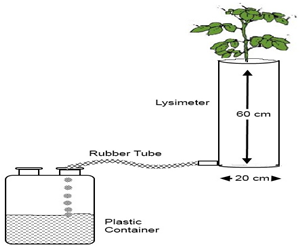
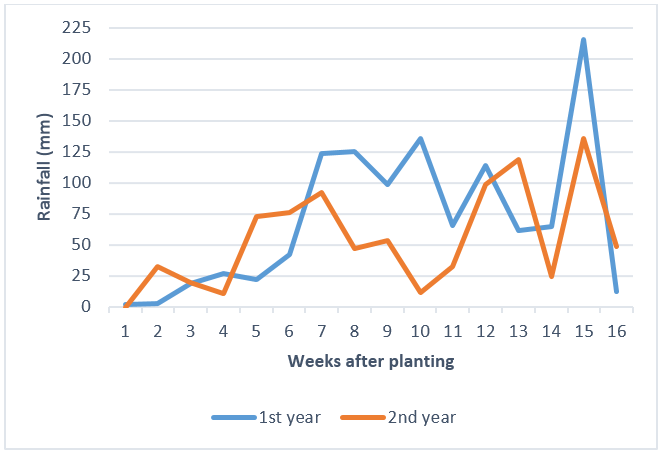
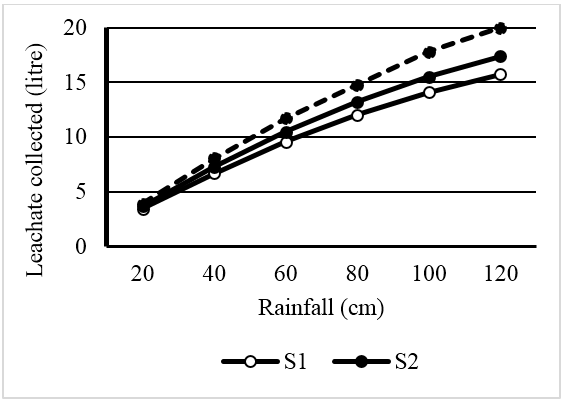
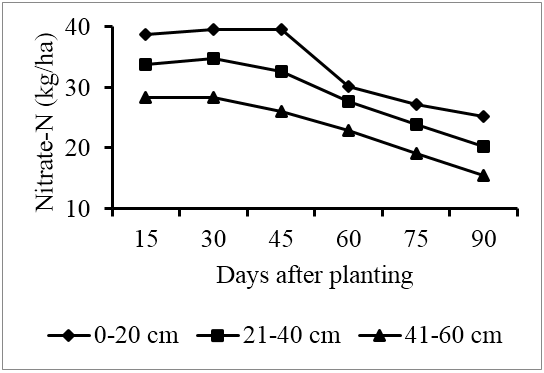
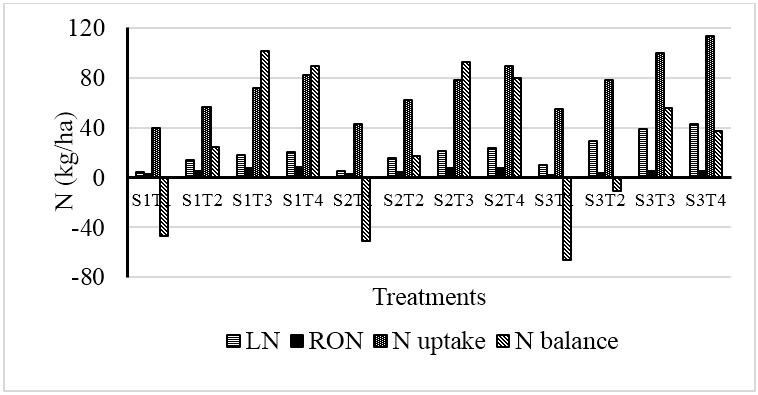
 Scientia Ricerca is licensed and content of this site is available under a Creative Commons Attribution 4.0 International License.
Scientia Ricerca is licensed and content of this site is available under a Creative Commons Attribution 4.0 International License.